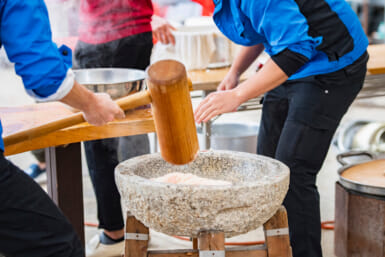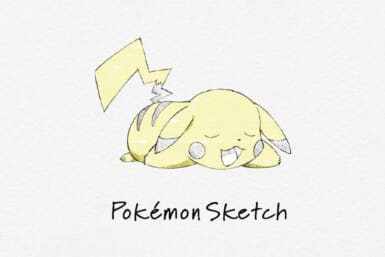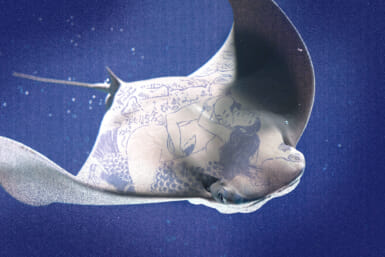This article is for bookworms, avid travelers and veteran as well as amateur Japanophiles. We’ve compiled a list of 47 Japanese books and stories (plus some bonus entries) taking place in each of the country’s 47 prefectures, so that you can visit all of Japan without leaving your home. We’ve got some classics and some contemporary short story collections, as well as a few nonfiction picks.
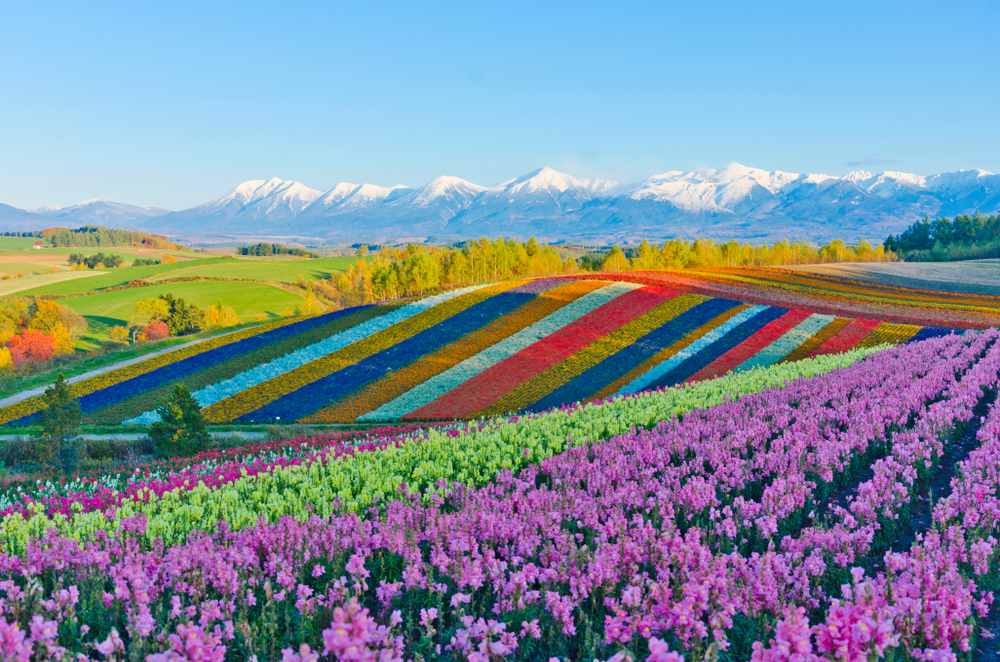
1. The Crab Cannery Ship by Takiji Kobayashi (Hokkaido)
First published in 1929 in the proletarian magazine Senki, The Crab Cannery (also published in English as The Cannery Boat and The Factory Ship) was inspired by Takiji Kobayashi’s newspaper findings that revealed the layered issues of Japan’s working class at the time. The Crab Cannery gives unique insights into early 20th-century Japanese politics and its people.
Bonus: Golden Kamuy by Satoru Noda
Breaking the “only novels” rule right off the bat to include the popular manga Golden Kamuy on this list. The manga and eponymous TV series have brought Ainu culture and history into the mainstream in a way that honors the Hokkaido indigenous people in fresh and entertaining ways. It’s a must-read (and watch).
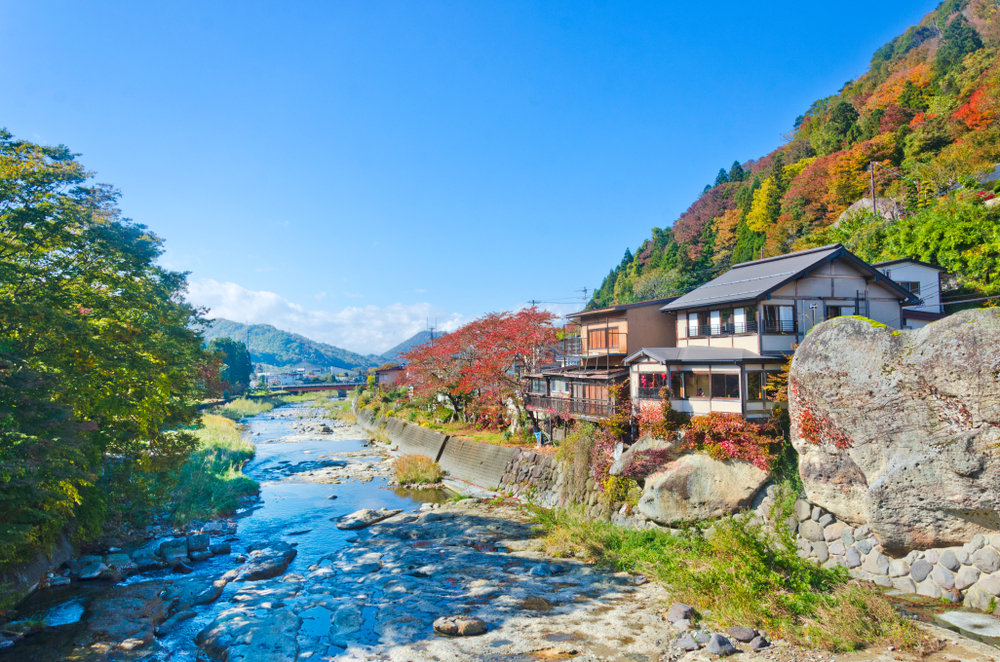
2. Return to Tsugaru: Travels of a Purple Tramp by Osamu Dazai (Aomori)
A fresh break from Osamu Dazai’s poignant novels, Return to Tsugaru is a travelogue in which the author records his thoughts and findings when visiting the city of Tsugaru in Aomori Prefecture. According to several scholars, this novel offers interesting insights into the complexities of the US-Japan relationship even before World War II.
3. The Narrow Road to the Deep North by Matsuo Basho, translated by Nobuyuki Yuasa (Iwate)
Throughout Matsuo Basho‘s work, you can travel Japan but The Narrow Road to the Deep North (also sometimes published under the name The Narrow Road to the Interior) takes you through the depths of Iwate through beautifully written haibun poems. This is considered one of the major works of the Edo Era (1603–1867).
4. Beautiful Star by Yukio Mishima, translated by Stephen Dodd (Miyagi)
Beautiful Star has been available in English since only April this year, yet already readers are calling this one of Yukio Mishima’s most underrated works. Themes include death, the Cold War, global warming and the trauma caused by the bombings of Hiroshima and Nagasaki.
5. Inspector Imanishi Investigates by Seicho Matsumoto, translated by Beth Cary (Akita)
Along with Seishi Yokomizo, Seicho Matsumoto was one of the most celebrated Japanese mystery writers. Inspector Imanishi Investigates sets itself apart from your usual mystery thanks to a variety of settings, including some in Akita Prefecture. This book is a hefty one at over 500 pages and has a medium-to-slow pace, but it is considered one of Matsumoto’s best works.
6. The Woman in the Dunes by Kobo Abe, translated by E. Dale Saunders (Yamagata)
This classic novel inspired a defining film adaptation, though we are surprised it’s not based in Tottori. An existential story, it stars an amateur entomologist who gets trapped at the bottom of a sandpit with a strange woman, tasked with shoveling sand. It’s an eerie read, but one we highly recommend.
7. March Was Made of Yarn by David Karashima and Elmer Luke (Fukushima)
March Was Made of Yarn is a collection of short stories and essays written by some of Japan’s leading contemporary authors. They reflect on the events of the 2011 Tohoku earthquake and tsunami. Not a lighthearted read by any means, but a key book for those interested in how the natural disaster affected contemporary Japan. Contributing authors include well-known names such as Yoko Tawada, Mieko Kawakami and Ryu Murakami.
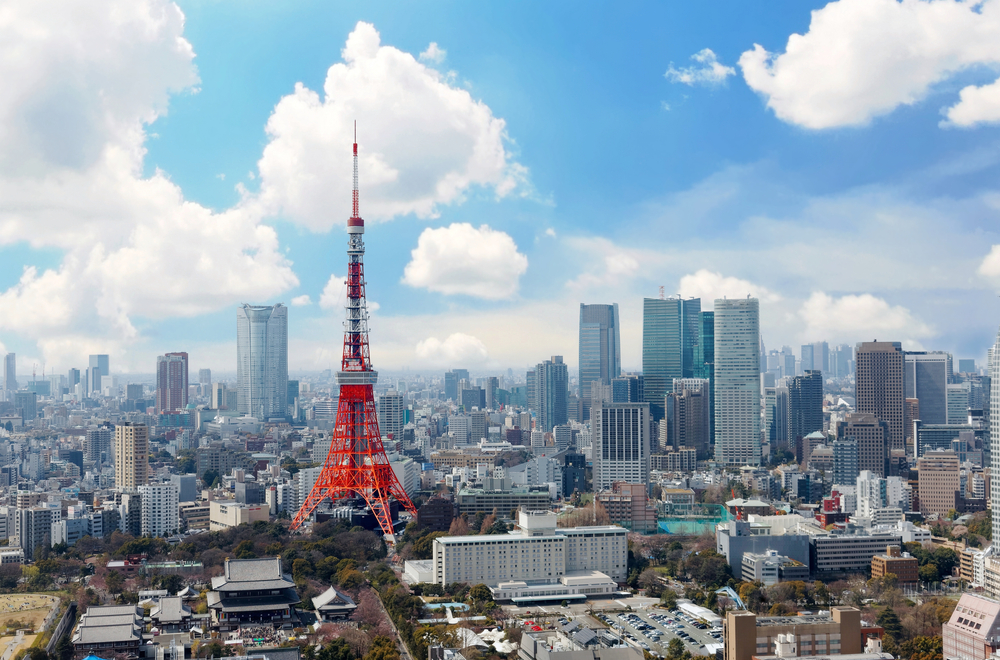
8. The Soil: A Portrait of Rural Life in Meiji Japan by Takashi Nagatsuka, translated by Anne Waswo (Ibaraki)
Arguably Takashi Nagatsuka’s best-known novel, The Soil is like a window into the rural peasant life as you would find it during the Meiji Era (1868–1912). Not unlike Honoré de Balzac’s oeuvre La Comédie humaine, this early 20th-century novel follows a community of residents instead of a defined protagonist.
Bonus: Library War series by Hiro Arikawa, translated by Kinami Watabe
Library War is a light novel series by Hiro Arikawa. The series’ four tomes follow a group of library workers defending what they believe are the rights of authors and readers. This extends to the entire concept of freedom of speech, with clear inspiration from Ray Bradbury’s Fahrenheit 451. Though the novels themselves are not translated, the manga adaptation by Yumi Kiiro is available in English for curious readers.
9. All She Was Worth by Miyuki Miyabe, translated by Alfred Birnbaum (Tochigi)
All She Was Worth is a thrilling story by Miyuki Miyabe. The book follows Detective Shunsuke Honma as he dives deeper into Tokyo’s underbelly following the case of a missing woman. It explores themes such as consumerism, with a special focus on loan sharks in Japan.
10. Woman on the Other Shore by Mitsuyo Kakuta Wayne P. Lammers (Gunma)
In Woman on the Other Shore, Mitsuyo Kakuta portrays to a tee the hardships of the everyday life of Japanese women, which range from the struggles of being a homemaker to finding yourself in a career and profession you love. This book is also about the friendship between the two polar-opposite protagonists, Sayako and Aoi.
11. Life for Sale by Yukio Mishima, translated by Stephen Dodd (Saitama)
Another Mishima novel recently translated into English. Life For Sale offers a little bit more of what you would expect from Mishima. Hanio Yamaga is the pessimistic protagonist who decides to offer — you guessed it — his life for sale, which then turns into a series of fantastical and thrilling encounters with an addict heiress, a vampire woman and mobsters, to name a few.
12. Diary of a Vagabond by Fumiko Hayashi (Chiba)
Fumiko Hayashi is one of the most celebrated authors and poets from the Showa Era (1926–1989). In Diary of a Vagabond, Hayashi explores the lives of mining communities in Chiba and suburban Tokyo. More specifically, it focuses on the struggles of young women in post-war Japan to find work. While Diary of a Vagabond has no recent English translation available, you can find excerpts in I Saw a Pale Horse & Selections from Diary of a Vagabond published in the Cornell East Asia Series.
13. Tokyo: Why choose one when we have a curated list?
Read our recommendations of novels taking place in Tokyo.
14. Naomi by Jun’ichiro Tanizaki, translated by Anthony H. Chambers (Kanagawa)
Jun’ichiro Tanizaki’s Naomi is a humorous story that follows a man’s descent into obsession and madness. After protagonist Joji meets the beautiful Naomi, he does everything he can to make her his wife. Naomi, however, is not the naive girl he first thought. How will Joji manage his obsession?
15. Sansho-dayu by Ogai Mori, translated by Tatsumi Fukudu (Niigata)
This short story by literary icon Ogai Mori, father of Mari Mori, follows the story of two aristocratic children in feudal Japan sold into slavery. As with other titles on this list, the themes in “Sansho-dayu” mainly surround the struggles of those who live in poverty. Kenji Mizoguchi’s 1954 big-screen adaptation adds another layer of depth by exploring the place of women in modern Japan.
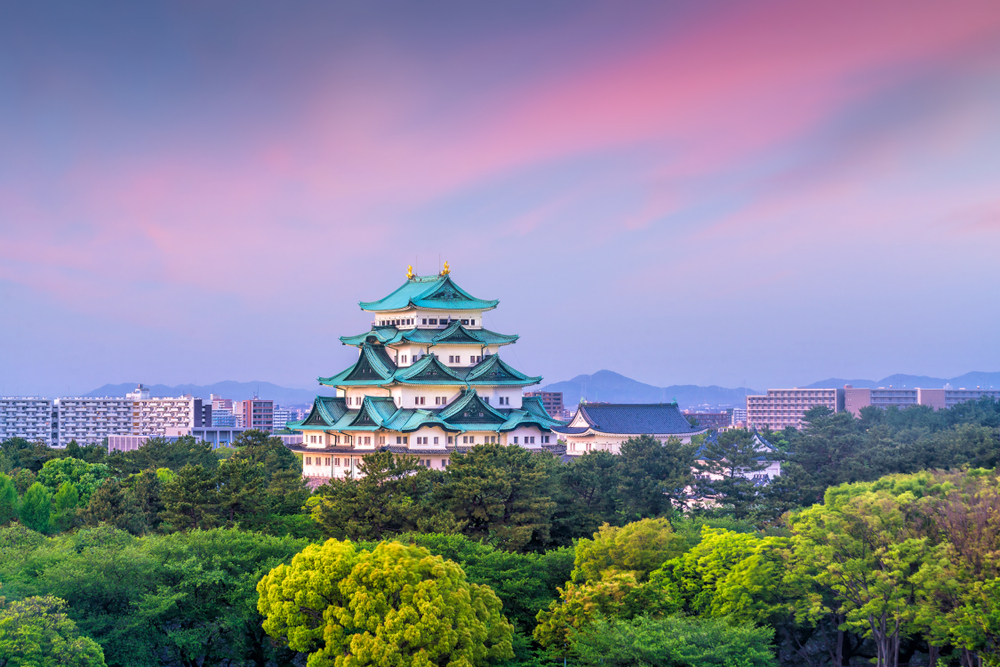
16. Coffinman: The Journal of a Buddhist Mortician by Shinmon Aoki (Toyama)
Most readers will likely know the story of Coffinman already: Shinmon Aoki’s novel inspired the 2008 Academy Award-winning film Departures. If you enjoyed the film, we recommend reading Coffinman for a deeper dive into the protagonist’s psyche, grief and ultimate reconciliation with death.
17. Water, Wood and Wild Things by Hannah Kirshner (Ishikawa)
Ishikawa-based writer Hannah Kirshner’s Water, Wood and Wild Things offers a rare insight into rural Japan’s relationship with all things food — from growing it in the fields of Ishikawa to preparing it into a delicious, homey meal, nothing is forgotten. This title made our list of eight Japan memoirs to read in 2021.
18. Asura Girl by Otaro Maijo, translated by Stephen Snyder (Fukui)
Though Asura Girl doesn’t only take place in Fukui, Otaro Maijo is a Fukui Prefecture-native and in many of his works, reading them in Japanese also means many encounters with Fukui-ben (Fukui dialect). Asura Girl won the author the Mishima Yukio Prize in 2003. The story centers around teenage student Aiko, who plots her own murder after the appearance of a serial killer slaughtering children. Aiko hopes her childhood crush, Yoji, will come and save her.
19. Snow Country by Yasunari Kawabata, translated by Edward G. Seidensticker (Yamanashi)
Snow Country is often cited as one of Yasunari Kawabata’s masterpieces. It’s also described as a must-read classic if you want to explore the roots of contemporary Japanese literature. In fact, this novel, along with two others, is what got Kawabata his Nobel Prize in Literature. The story follows the love affair between a Tokyo businessman and a geisha in the countryside. Themes revolve heavily around the contrasts between tradition and modernity, as well as the concept of beauty in post-World War I Japan.
20. The Inugami Curse by Seishi Yokomizo, translated by Yumiko Yamazaki (Nagano)
Although not the first of private detective Kosuke Kindaichi’s adventures, The Inugami Curse is the most well-known mystery novel by Yokomizo. The tale inspired not one but two movies, the latest in 2006. It’s a story full of surprises and twists that are sure to delight lovers of whodunit novels.
21. Before the Dawn by Toson Shimazaki, translated by William E. Naff (Gifu)
Through this moving story of his family’s history, Toson Shimazaki’s memoir Before the Dawn offers a glimpse into the lives of Japan citizens before, during and after the Meiji Restoration. It is said that Shimazaki wrote Before the Dawn with both Japanese and foreign audiences in mind.
22. The Dancing Girl of Izu by Yasunari Kawabata, translated by J. Martin Holman (Shizuoka)
“The Dancing Girl of Izu” (also published as “The Izu Dancer”) is one of the numerous short stories by Kawabata that are, in nature, autobiographical. The story follows the summer holidays of a young university student that escapes Tokyo by going to the Izu Peninsula. He then stumbles upon a group of traveling musicians he decides to follow around the region.
23. Colorless Tsukuru Tazaki and His Years of Pilgrimage by Haruki Murakami, translated by Philip Gabriel (Aichi)
As the title of this Haruki Murakami book might suggest, Colorless Tsukuru Tazaki is a story that is very much character-driven, with a special focus on the psychological turmoils and growth of the main character. This is Murakami’s 13th novel. It sold one million copies in Japan just a month after it hit the shelves.
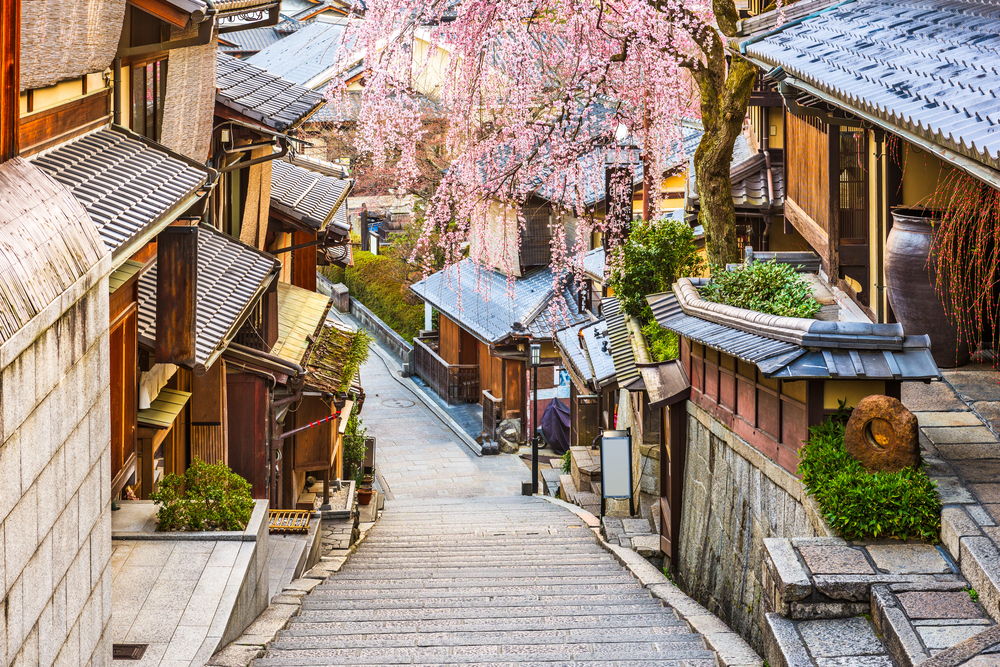
24. A Dark Night’s Passing by Naoya Shiga, translated by Edwin McClelland (Mie)
Active during the Taisho (1912–1926) and Showa (1926–1989) eras, Naoya Shiga is best known for his stories with an autobiographical tone to them. In A Dark Night’s Passing, a wealthy writer seeks to get out of an unhappy marriage. While the plot might be overly simple on the surface, Shiga is known for his unique and moving style, which certainly charmed many readers.
25. Beauty and Sadness by Yasunari Kawabata, translated by Howard Hibbett (Shiga)
Another Kawabata recommendation. Beauty and Sadness is one of his works that challenges the idea of tradition versus modernity through a compelling narrative and complex characters. This story starts in Kyoto but takes place in some areas of Shiga.
26. Tatami Galaxy by Tomihiko Morimi, translated by Emily Balistrieri (Kyoto)
Tomihiko Morimi is a severely (and we mean severely) underrated writer of magical realism and surrealism. His books often take place in Kyoto, where he spent his university years. Tatami Galaxy follows a Kyoto University student as he navigates through university life and young adult love.
It will be available in English for the first time later this year.
Bonus: The Night is Short, Walk on Girl by Tomihiko Morimi, translated by Emily Balistrieri
The Night is Short, Walk on Girl is the unofficial sequel to Tatami Galaxy, though you don’t need to have read one to understand the other. Expect just as much spontaneity, weirdness and fun.
27. Thirst for Love by Yukio Mishima, translated by Alfred H. Marks (Osaka)
For readers craving a love story full of emotion, look no further than Mishima’s Thirst for Love. However, that’s not to say that this book belongs in the romance category. Instead, Thirst of Love focuses on the ugly feelings that take over our hearts and heads in the heat of passion, including (but certainly not limited to) jealousy.
28. Grave of the Fireflies by Akiyuki Nosaka, translated by James R. Abrams (Hyogo)
One of the best animated tearjerkers of the 1980s, Grave of the Fireflies was, in fact, based on a novel of the same name by Japanese novelist Akiyuki Nosaka. The setting of this book is Kobe, before, during and after the 1945 bombings.
29. The River with No Bridge by Sue Sumii, translated by Susan Wilkinson (Nara)
Sue Sumii, throughout her career, advocated for the rights of minorities in Japan, particularly those of the Burakumin. Set in the 1960s, The River with No Bridge is a semi-autobiographical novel that explores the challenges and discriminations the Burakumin community faced in the mid-20th century.
30. The River Ki by Sawako Ariyoshi, translated by Mildred Tahara (Wakayama)
The Kinokawa (also called Yoshino River in Nara) is a river than flows from Nara to Wakayama. In The River Ki, writer Sawako Ariyoshi introduces three generations of women in families that live in the Japanese countryside along the river’s plentiful shores.
31. Showa: A History of Japan Series by Shigeru Mizuki, translated by Zack Davisson (Tottori)
This series by Shigeru Mizuki is a must-read for fans of Japanese history. Meticulously researched and full of details pulled from the author’s personal life, Showa: A History of Japan provides insights into 20th century Japan like no other history book. The series is split into four segments, each with their own major events that defined this period.
32. Glimpses of an Unfamiliar Japan by Lafcadio Hearn (Shimane)
Lafcadio Hearn is best known for his ghost stories, but he’s written a handful of fiction and nonfiction works as well. Glimpses of an Unfamiliar Japan is a collection of everything Japan, from local superstitions and customs to what Hearn calls “the Japanese smile” and food.
Bonus: [Insert your preferred historical record book here]
Most of Japan’s historical records are set in the general Shimane area, including the Kojiki, the Taiheiki and the Nihongi. For a deep dive into the world of Japanese history — the very beginning of it — start here.
33. The Village of Eight Graves by Seishi Yokomizo, translated by Bryan Karetnyk (Okayama)
The third of the detective Kosuke Kindaichi novels, The Village of Eight Graves is a lesser-known story by Yokomizo. This one takes place in the mountains of Okayama, where mysterious murders occur, perhaps linked to an old samurai’s tale. Kindaichi investigates.
34. Black Rain by Masuji Ibuse, translated by John Bester (Hiroshima)
Black Rain is based on historical records following the bombing of Hiroshima on August 6, 1945. The book centers around a cast of characters between that fateful day and August 15. It’s a bit of a hard read but is worth adding to your TBR list.
35. Kwaidan: Stories and Studies of Strange Things by Lafcadio Hearn (Yamaguchi)
This nomination is mainly (but not only) for “Hoichi the Earless.” As mentioned above, Hearn is best known for his stories inspired by Japanese folktales. Kwaidan is a collection of those, making it perfect for Halloween or summer in Japan.
36. The Baseball Widow by Suzanne Kamata (Tokushima)
Based in Tokushima, Suzanne Kamata has grown to be a bit of an expert on Tokushima. Her latest novel, The Baseball Widow is a wonderful work of fiction taking place in the prefecture. The story follows an American and Japanese couple, faced with the challenge of navigating their cultural differences.
37. Kafka on the Shore by Haruki Murakami, translated by Philip Gabriel (Kagawa)
Making the New York Times 10 Best Books of 2005 list, Kafka on the Shore is one of Murakami’s must-read novels — even if you aren’t the biggest fan of magical realism. With a good balance of character development and events to keep you on your toes, this read is sure to make you want to travel to Shikoku for some soul-searching.
38. The Changeling by Kenzaburo Oe, translated by Deborah Boliver Boehm (Ehime)
The Changeling is a thrilling story by Nobel Prize-winning author and Ehime native Kenzaburo Oe. This novel follows the events after the surprising suicide of filmmaker Goro Hanawa. The story moves from rural Japan to Berlin in just a few chapters.
Bonus: Clouds Above the Hill by Ryotaro Shiba, translated by Julia Winters Carpenter and Paul McCarthy
For those interested in reading more about the Russo-Japanese war, we recommend looking into Ryotaro Shiba’s Clouds Above the Hill series. A small warning: This book is very graphic.
39. Tosa Nikki (or The Tosa Diary) by Ki no Tsurayuki, translated by William N. Porter (Kochi)
Though Kafka on the Shore does partly take place in Kochi, we wanted to mention Tosa Nikki as our pick for this prefecture in Shikoku. The Tosa Nikki is the first notable example of a diary as literature in Japan, which then paved the way for some of the first major works of Japanese literature. The book tells the story of a journey between Kyoto and the Tosa Province (modern-day Kochi) through a series of poems.
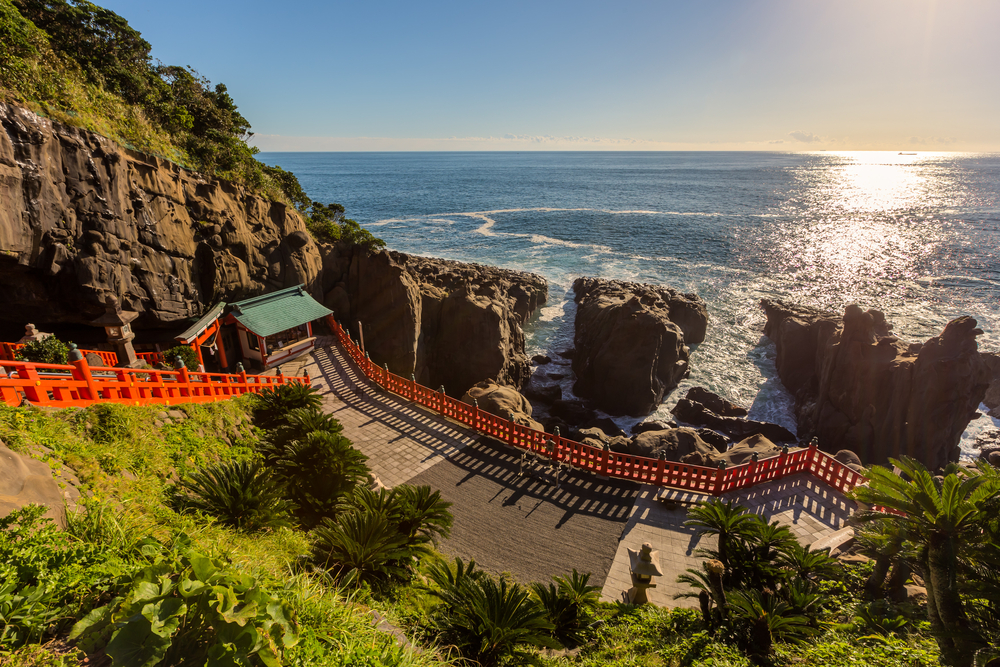
40. From the Fatherland, With Love by Ryu Murakami, translated by Ralph McCarthy, Charles De Wolf and Ginny Tapley Takemori (Fukuoka)
Nagasaki-native Ryu Murakami is notorious for his stories that leave nothing to the imagination and tend to expose (and sometimes showcase) the darkest sides of humanity. From the Fatherland, With Love is a science fiction novel in which Murakami explores an alternative reality. In this world, North Korea invades and occupies Japan in 2011.
41. Villain by Shuichi Yoshida, translated by Philip Gabriel (Saga)
Shuichi Yoshida is an award-winning, versatile writer with everything from noir novels to songwriting in his accolades. Villain is one of his two works translated into English and it is probably the most thrilling book on this list (no exaggeration). The novel opens with the shocking death of a young woman and unravels as people try to understand what led to her passing.
42. The Bells of Nagasaki by Takashi Nagai, translated by William Johnston (Nagasaki)
The Bells of Nagasaki is not for the faint of heart but serves as a reminder of the devastating effects of the atomic bombs that destroyed much of Hiroshima and Nagasaki. This work strays a bit from this fiction-heavy list in that it is nonfiction — and Takashi Nagai, who was a survivor of the Nagasaki bombing, does not hold back in his recollection of the horrific events.
43. Kusamakura (Grass Pillow) by Natsume Soseki, translated by Meredith McKinney (Kumamoto)
Though not figuring in Natsume Soseki’s top works, Kusamakura (meaning Grass Pillow), remains a must-read if you love a slow-paced, travel story. This novel follows the adventures of a nameless artist wandering through the mountains and his strange encounters with a local beauty. It’s not so much character or plot driven as a love letter to Kyushu’s landscape.
44. The Decagon House Murders by Yukito Ayatsuji, translated by Ho-Long Wong (Oita)
The Decagon House Murders is the first in Yukito Ayatsuji’s Manson Murder series, which spans over nine books and about 25 years. The story starts with a cast of university students traveling on an island. One by one, the students disappear only to be found dead. Expect an unexpected resolution to this suspenseful story.
45. Botchan by Natsume Soseki, translated by Joel Cohn (Miyazaki)
Ranking as high as Kokoro and I Am a Cat, Botchan is one of Soseki’s best-known novels. It’s also a must-read in literature classes for many students in Japan. The story, said to be inspired by Soseki’s years of teaching in Matsuyama, follows the misadventures of Botchan. The theme of this novel is morality, which Soseki touches upon using well-timed humor.
46. The Moai Island Puzzle by Alice Arisugawa, translated by Ho-Ling Wong (Kagoshima)
In his introduction, Soji Shimada, one of the leading writers of Japanese detective novels, describes The Moai Island Puzzle as a masterpiece. It certainly is a classic locked-room murder mystery. Follow along as three university students on holiday find themselves intertwined in a series of murders, one of which seems impossible.
47. The Girl with the White Flag by Tomiko Higa, translated by Dorothy Britton (Okinawa)
As the title implies, Tomiko Higa’s The Girls with the White Flag is not a happy tale. In a deeply personal memoir, Higa relives her tragic childhood in Okinawa, offering rare insight into the unintended casualties of war. This story is one of pure survival, threaded with encounters of violence and death at every street corner. Readers, however, will be surprised by the few uplifting musings and moments.


